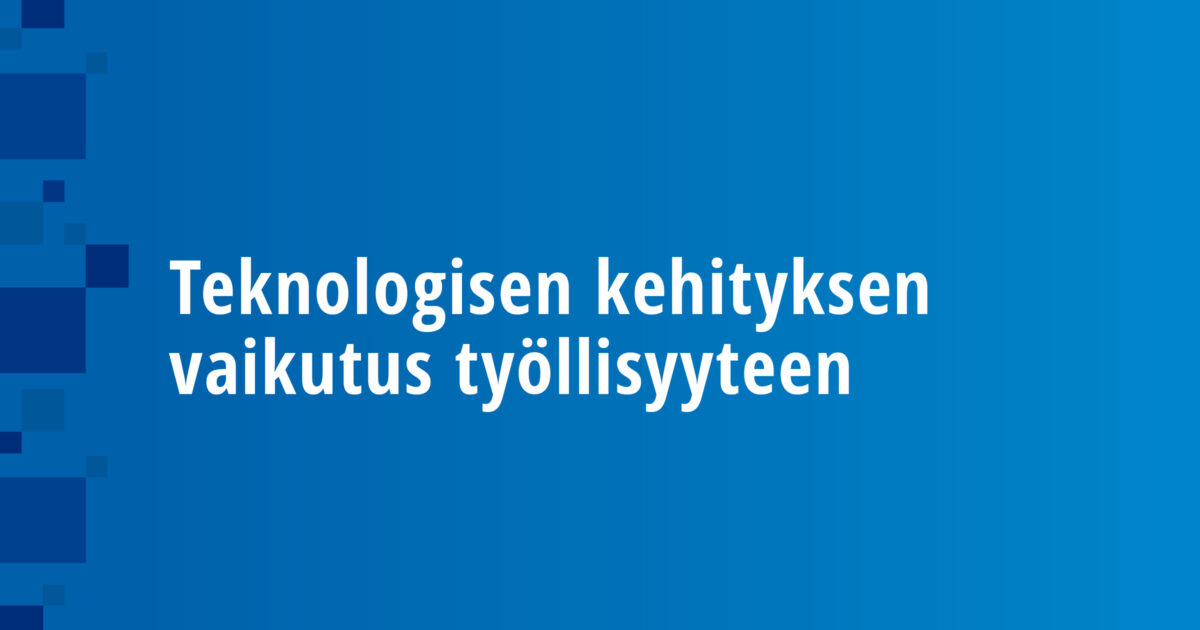
Teknologisen kehityksen työllisyysvaikutusten ymmärtämiseksi täytyy erotella uudet teknologiat kolmeen eri luokkaan: 1) automaatioteknologiat, 2) uusia tehtäviä luovat teknologiat ja 3) pääoman ja työn tuottavuutta kasvattavat teknologiat. Nämä teknologiat vaikuttavat työllisyyteen hyvin eri tavoin ja erilaisten mekanismien kautta. Automaatioteknologiat voivat joko lisätä tai vähentää ihmistyön kysyntää, kun taas muut teknologisen kehityksen muodot yksikäsitteisesti lisäävät ihmistyön kysyntää.
Empiiriset arviot automaatioteknologioiden työllisyysvaikutuksista vaihtelevat maittain. Yhdysvaltalaiset tulokset ovat työllisyyden kannalta negatiivisia, kun taas saksalaiset ja ranskalaiset tulokset osoittavat päinvastaista. Teknologisen kehityksen työllisyysvaikutukset riippuvat hyvin todennäköisesti kansainvälisen kaupan merkityksestä taloudessa, työmarkkinainstituutioista ja politiikkavalinnoista. Näistä aiheista on kuitenkin vielä vain vähän tutkimusta. Vielä vähemmän tiedetään siitä, miten teknologisen kehityksen suunta määräytyy (automaatioteknologiat vs. uusia tehtäviä luovat teknologiat) ja miten siihen voidaan politiikkatoimenpiteillä vaikuttaa.
In order to understand the employment effects of technological progress, it is useful to separate three types of technologies: 1) automation technologies, 2) technologies that create new tasks, and 3) capital- or labor-augmenting technologies. These different types of technological advances affect employment very differently and through different channels. Automation technologies may either decrease or increase employment, whereas the other types of technological progress unambiguously increase employment.
Empirical estimates of the employment effects of automation are very different in different countries. The results from United States show negative employment effects, whereas German and French studies show the opposite. It is likely that the employment effects of automation technologies depend on the role of international trade, labor market institutions and political choices. However, there is still little research on these topics. There is even less research on how the direction of technological change (automation technologies vs. technologies creating new tasks) is determined and how it can be affected by policy.
Arkadiankatu 23 B
00100 HELSINKI
Vaihde ja vastaanotto avoinna arkisin klo 8.30–15:30.
+358 (09) 609 900